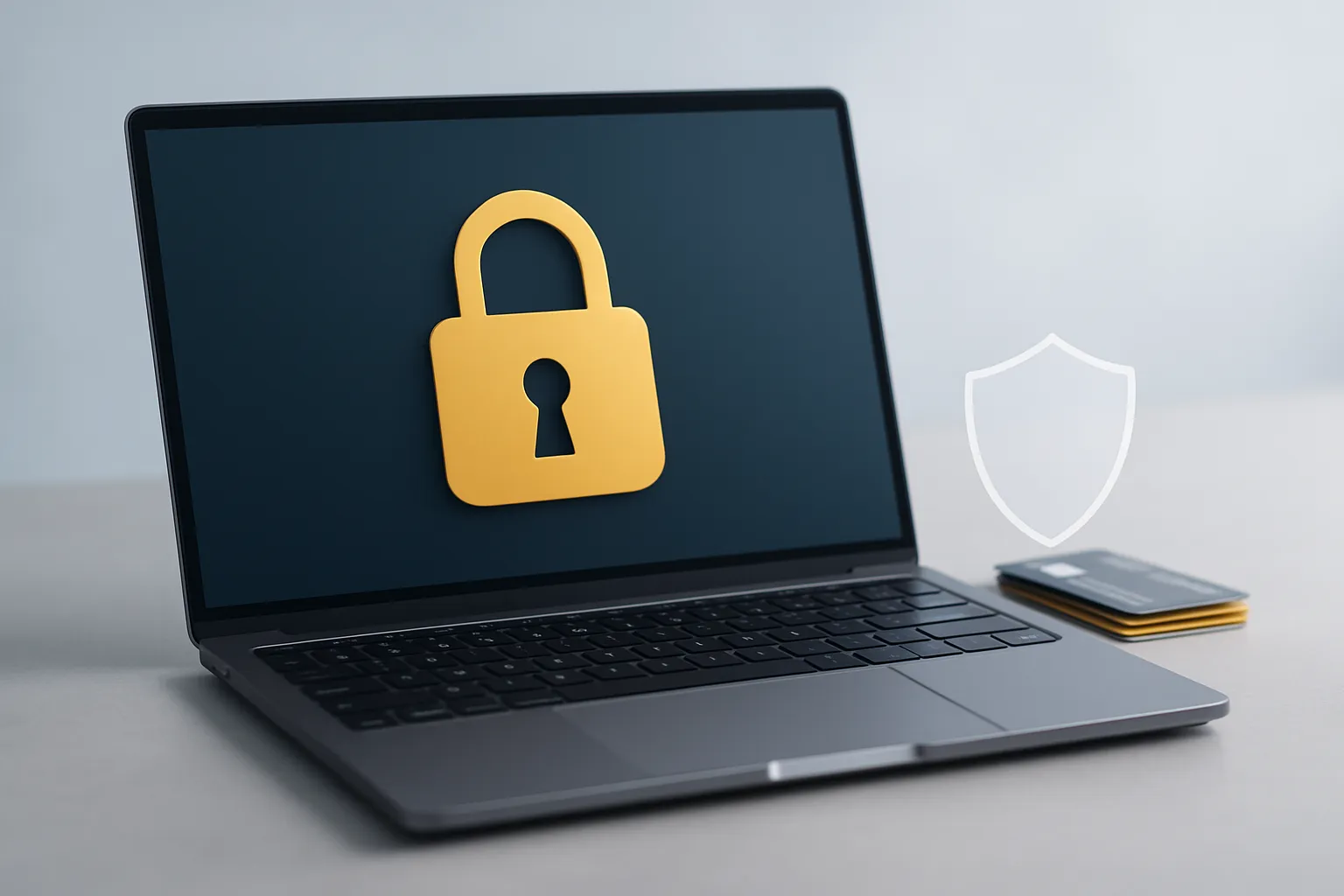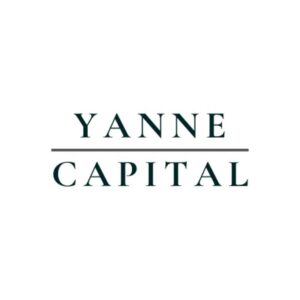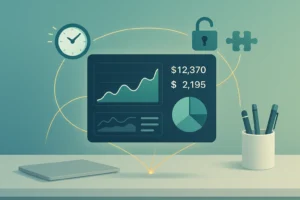Online banking has become essential for businesses, but it comes with security risks. This article presents expert-backed strategies to protect your company’s finances in the digital realm. Learn practical steps to safeguard your business assets while leveraging the convenience of online banking solutions.
- Implement Multi-User Role-Based Access Controls
- Isolate Financial Operations on Dedicated Devices
- Use Separate Hardened Device for Banking
- Employ Multi-Factor Authentication for Online Banking
- Whitelist IP Addresses for Banking Portals
- Maintain Dedicated Device for Business Banking
- Utilize Separate Browser Profile for Financial Transactions
- Enable Phishing-Resistant Multi-Factor Authentication
- Monitor Accounts Daily with Strong Authentication
- Prohibit Password Sharing Among Team Members
- Conduct Weekly Finance System Log Reviews
- Enforce MFA and Limit Account Access
Implement Multi-User Role-Based Access Controls
Security is absolutely non-negotiable when it comes to managing business finances online. One specific measure we take is the strict implementation of multi-user, role-based access controls within our online banking platforms. This means that no single person can initiate and approve a transaction independently — every step requires verification and approval from multiple authorized personnel.
This layered approach not only reduces the risk of internal fraud but also provides an audit trail for every financial movement, which is essential in a regulated environment like ours. Additionally, we pair this with hardware-based two-factor authentication (such as secure USB tokens or mobile app-based authenticators), ensuring that even if login credentials were ever compromised, unauthorized access is still virtually impossible.
In a business where confidentiality, compliance, and client trust are critical, these measures give us confidence that our financial operations remain secure, traceable, and fully controlled.
 Andrew Izrailo
Andrew Izrailo
Senior Corporate and Fiduciary Manager, Astra Trust
Isolate Financial Operations on Dedicated Devices
One specific measure I take to secure business finances when using online banking solutions is to isolate financial operations on a dedicated, access-controlled device, with strict network and credential hygiene.
This device:
- Is enrolled in endpoint protection and regularly audited
- Uses hardware-based multi-factor authentication (e.g. YubiKey or passkey) for all banking logins
- Is not used for day-to-day browsing or email, reducing phishing risk
- Connects only via encrypted, monitored networks (VPN when remote)
Additionally, I enforce strict role-based segregation of duties within my team to minimize insider risk, ensuring no single individual can initiate and approve a transaction.
Ultimately, security isn’t just about technology; it’s about establishing predictable, auditable workflows that eliminate blind spots and reduce the human attack surface.
 Raul Tudor
Raul Tudor
Fractional Chief Technology Officer, Tudor Software House
Use Separate Hardened Device for Banking
The most critical measure I’ve implemented for business banking security is using dedicated devices exclusively for financial transactions. We maintain a separate, hardened device that’s used solely for banking activities and never for general web browsing, email, or other business operations.
This dedicated banking device runs minimal software with automatic updates enabled, uses a separate network connection when possible, and maintains strict access controls. The device never accesses social media, downloads files, or visits websites outside of verified financial institutions. This isolation approach significantly reduces the attack surface that could compromise banking credentials.
The key insight is that most banking compromises occur through cross-contamination from other online activities. Email phishing, malicious downloads, or compromised websites can install keyloggers or banking trojans on devices used for multiple purposes. By maintaining complete separation between banking and other business activities, we eliminate these common attack vectors.
We complement this with transaction monitoring alerts set at conservative thresholds, so any unusual activity triggers immediate notifications. Additionally, we maintain separate login credentials for banking that aren’t used anywhere else and enable all available security features offered by our financial institutions.
The implementation requires discipline but provides substantial security benefits. Business banking typically involves larger transaction amounts and more complex account structures than personal banking, making the dedicated device approach a worthwhile investment for protecting financial assets.
 Simon Lewis
Simon Lewis
Co-Founder, Certo Software
Employ Multi-Factor Authentication for Online Banking
One key measure we implement to protect our business finances when using online banking solutions is the use of multi-factor authentication (MFA). This system adds an extra layer of protection by requiring not just a password, but also a second factor, such as a code sent to a mobile device or an authentication app.
While it may seem like an additional step, this simple practice significantly reduces the risk of unauthorized access. We also complement this with clear internal policies: access is limited to key team members, passwords are strong and updated regularly, and sessions are set to log out automatically after periods of inactivity.
It’s also important to stay informed about updates and security enhancements offered by banks and digital service providers. Technology evolves quickly, and staying protected means staying up to date.
Ultimately, security isn’t just the responsibility of the bank or platform; it’s a culture that must start within the business itself.
 Ambrosio Arizu
Ambrosio Arizu
Co-Founder & Managing Partner, Argoz Consultants
Whitelist IP Addresses for Banking Portals
When managing online banking for our behavioral health center and real estate assets, I prioritize segregated account access through role-based permissions. Our finance team uses a dedicated secure network with multi-factor authentication (MFA), but I take it a step further: we whitelist IP addresses for all online banking portals. This means only specific devices on approved networks can access sensitive financial dashboards. It adds friction, but it significantly reduces the attack surface for phishing and credential theft. We also use read-only access for team members who need visibility but not transfer rights. For a business like ours handling M&A transactions and vendor funding across states, this structure preserves operational flexibility without compromising control.
 Brian Chasin
Brian Chasin
CFO & Co-Founder at Soba New Jersey, SOBA New Jersey
Maintain Dedicated Device for Business Banking
I personally only ever access our business banking through a dedicated device, a secure laptop that is used exclusively for this purpose.
I believe using a separate machine that isn’t exposed to general browsing, email attachments, or downloads is a highly underrated layer of security.
I don’t install any extra software on that machine, and I don’t log into social media or unrelated websites from it. It’s used solely for banking, finance tools, and official company portals.
I also always keep this device patched and up to date, and I’ve disabled automatic connections to Wi-Fi networks I don’t recognize.
I even keep it physically separate; it never leaves the office.
I think this kind of isolation is one of the most effective measures anyone can take, especially if you’re handling sensitive transactions or account access daily.
It simply means one less attack surface and one less thing to worry about when it comes to phishing or malware.
I pair this with multi-factor authentication (used every time), a password manager, and regular checks on account access logs, but I believe that a dedicated device is the foundation.
This practice gives me peace of mind, and honestly, it’s made a significant difference in how confidently I operate online in a world where threats are constantly evolving.
 Sam Hodgson
Sam Hodgson
Finance Editor, Clifton Private Finance
Utilize Separate Browser Profile for Financial Transactions
Several years ago, I almost typed my login into a very convincing fake bank page. I caught it at the last second; the URL was off by one letter. My heart rate soared to 180. Lesson learned.
So now I do this:
1. One browser for money. Period.
I keep a “money browser” (a separate profile works too). No email, no news rabbit holes, no “let me just check this one link.” The first time in, I bookmarked the real login pages for each bank, and I never wander off those bookmarks. My password manager only autofills on those exact URLs. If nothing fills, I back out. Boring? Absolutely. That’s the point.
2. Phishing-resistant MFA (passkeys) as soon as the bank allows it.
Passkeys (FIDO2/WebAuthn) don’t “type,” so a fake site gets nothing. If the domain isn’t right, the key just shrugs. I use a YubiKey (spare registered, PIN locked) and the built-in passkey on my laptop/phone (Face ID / Windows Hello). One key for daily use, one tucked away for “oh no, I lost it” days.
Reality check: none of this makes you bulletproof. A keylogger, malware, or a smooth-talking fraudster on a customer service line can still hurt you. These layers just make the common, dumb ways to get robbed a lot harder. Think of it as having a smoke alarm and a fire extinguisher, not a fireproof life.
Why both? The quarantine browser keeps me out of sketchy neighborhoods. The passkey refuses to open the wrong door if I blunder in anyway. One reduces the chance I step on a landmine; the other makes the landmine inert.
Do the browser thing today. It costs nothing and takes ~10 minutes. Add passkeys when your bank catches up. Tiny habits matter here. One sloppy click can empty an account. This setup buys me (and you) a little calm and a lot of safety, even if it can’t promise perfection.
 Omaro Ayloush
Omaro Ayloush
Mortgage Broker, Loan Factory
Enable Phishing-Resistant Multi-Factor Authentication
As a CEO and Wealth Advisor, protecting my clients’ assets is my top priority. One specific measure I take to secure my business finances is enabling multi-factor authentication (MFA) on all accounts. MFA adds a critical layer of protection by requiring a unique verification code, often via a secure device or authenticator app, before access is granted. Paired with strong, unique passwords and daily account monitoring, it significantly reduces the risk of unauthorized access.
 Avi Bialo
Avi Bialo
Founder/CEO and Wealth Advisor, Wealth Solutions 360
Monitor Accounts Daily with Strong Authentication
We do not allow password sharing under any circumstances, even between founders or senior team members. Each person uses their own vault login with logging, time stamps, and automatic expiration built into the system. This transparency prevents finger-pointing and creates cleaner processes when something breaks or goes wrong. It teaches ownership and deters casual missteps.
We also limit the number of platforms accessing our bank credentials to the absolute minimum. If an integration does not pass compliance testing, it never receives a finance login. We avoid prioritizing convenience over long-term safety. Our risk model keeps the focus on resilience, not shortcuts.
 Marc Bishop
Marc Bishop
Director, Wytlabs
Prohibit Password Sharing Among Team Members
We review our finance system logs weekly and cross-reference them with internal time tracking records. This check helps us confirm that project costs match billable milestones and timelines accurately. If anomalies appear, we investigate before sending out payments or chasing down clients. Proactive reviews prevent fires and promote stronger forecasting conversations.
We also schedule biannual penetration tests with third-party vendors who audit our banking workflows and admin accounts. Their findings guide how we patch vulnerabilities before any attacker could exploit them. Waiting for failure is not a strategy in finance. Our aim is always to prevent risk from growing unnoticed.
 Jason Hennessey
Jason Hennessey
CEO, Hennessey Digital
Conduct Weekly Finance System Log Reviews
One specific measure we take is enforcing multi-factor authentication (MFA) across all online banking platforms to ensure that even if login credentials are compromised, unauthorized access is still prevented. Additionally, we limit account access to essential personnel and regularly audit permissions to reduce exposure.
 Dante Thompson
Dante Thompson
CEO, Summr Capital Management
Enforce MFA and Limit Account Access
The security of our clients’ financial information is our highest priority. Using online banking applications like Pennylane (the one we use) requires a specialized device environment and robust multi-factor authentication (MFA). We monitor access with role-based security and review processes to track transactions. We are proactive in keeping our financial intelligence and outsourcing services secure and reliable, particularly for our clients in France and abroad.
 Dina Razafy
Dina Razafy
CMO, BIOS Expertise













